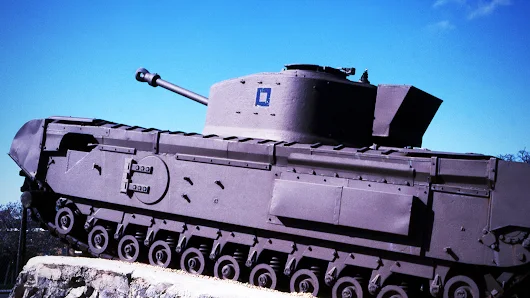'38-'45 WLA
1938: Lady Denman is approached by the Ministry of Agriculture to re-form the
Women's Land Army (WLA). She begins go make plans in terms of national organisation and recruitment, but there are delays in taking these proposals forward.
25th January 1939: A National Service handbook lists the ‘Women’s Land Army’ as one of the
civilian organisations which
women could volunteer to join in the event of war.
1st June 1939: The Women’s Land Army is
re-formed, with Lady Gertrude Denman as Honorary Director.
Recruitment begins for Land Girls in earnest. Wages were set as follows:
28 shillings (£1.40) weekly pay (
10 shillings less than the average farm wage at that time) for a 50 hour week (48 in winter).
Half of that (70p) to pay for
food and accommodation.
29th August 1939: Lady Denman sets up the Women’s Land Army headquarters at her home,
Balcombe Place, Hayward Heath, West Sussex.
1st September 1939: Germany invades
Poland.
3rd September 1939:
War is declared on Germany by Britain, the British Empire and France.
December 1939:
4,500 Land Girls working on the land.
January 1940: Food rationing begins in Britain.
April 1940:
The Land Girl, a monthly magazine, is published by the Women’s Land Army, with Margaret Pyke as its editor.
June 1940: 6,000 Land Girls working on the land.
March 1941: ‘The Land Girl’ launches a
national appeal for members to recruit other new volunteers.
New minimum wage from 1st March 1941:
32 shillings (£1.60) (for up to 48 hours a week) for a Land Girl
billeted off the form,
16 shillings (80p) for a Land Girl
billeted on the farm (plus
free board and lodging), plus
overtime pay.
May 1941:
All British women aged between
19-40 have to
register at labour exchanges for war work.
June 1941: 14,000 Land Girls working on the land.
July 1941: HM Queen Elizabeth agreed to become
Patron of the Women’s Land Army.
September 1941: ‘In the Event of Invasion’, Land Girls are encouraged to stick to their jobs, but ‘The Land Girl’ issues advice on
how to disable tractors if in real danger of capture by the enemy.
December 1941: Churchill’s wartime government passes
National Service Act (No.2), allowing for the
conscription of women.
29th December 1941:
Minimum wages increased to 38 shillings for 48 hour week (or
18 shillings with free bed and board).
April 1942: The
Women’s Timber Corps is formed in Britain.
More than 4,000 Lumber Jills are employed in forestry throughout the war. They were employed by the
Home Timber Production Department of the Ministry of Supply.
20th April 1942: Miss Clemence Dane, in a BBC radio broadcast, refers to the Women’s Land Army as the
‘Cinderella Service’, in the notion that it is taken for granted and its importance being overlooked. This is the first time the Women’s Land Army is referred to as the ‘Cinderella Service’.
June 1942: 40,000 Land Girls working on the land. The
Land Army Benevolent Fund is started by Lady Denman to provide financial assistance to Land Girls who suffered
illness or accident as a result of their work.
3rd July 1942: Queen Elizabeth hosts a
3rd birthday party for the Women’s Land Army.
February 1943: 53,500 Land Girls working on the land.
June 1943: 65,000 Land Girls working on the land – producing
70% of Britain’s food.
August 1943:
Recruitment to the Women’s Land Army is stopped by a decision of the War Cabinet (
more workers were needed in the aircraft production industry).
29th August 1943: BBC Women’s Land Army broadcast referred to the
uniform rationing clothing coupon arrangements, Women’s Land Army
correspondence courses in agriculture and horticulture and Proficiency Tests begin.
December 1943: 80,000 Land Girls working on the land.
3rd January 1944:
Recruitment to the Women’s Land Army
re-opens.
May 1944: Women’s Land Army headquarters moves back to
London, but
returns to Sussex after doodlebug attacks begin.
July 1944: First complete series of
Proficiency Tests had been completed.
January 1945: Special consideration given to Land Girls who had been in the Land Army for
3 or more years who want to
transfer to their home counties.
16th February 1945: Lady Denman resigns as director of the Women’s Land Army
over the decision to exclude members of the Land Girls from post-war financial benefits.
8th May 1945: VE Day – end of war in Europe.





